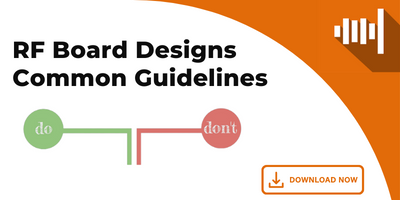
Quality improvement is a concept that has become widely understood and embraced across all industries in the past few decades. Methodologies like Kaizen and Six Sigma have helped improve manufacturing efficiency, reduce errors, and bring superior products to market.
How quality improvement systems are implemented will vary depending on the industry, but just about any organization will benefit enormously by adopting them. Due to the importance of precision and efficiency, engineering firms, in particular, can benefit from using systems to improve quality. But one area where firms have often failed to implement quality methodologies most effectively is in engineering design.
What Can Happen if You Fail to Improve Quality in Engineering Designs?

Ok maybe that won't happen... but here's a real story for you:
In some ways, the engineering design process is the most important area where quality improvement systems can be applied. The further down the development process an error goes before detection, the more expensive it becomes to fix. In many companies, the implementation of quality control in engineering design has lagged behind when compared to later phases of production, an oversight that can cost businesses huge amounts money and time.
This is because of a long-held perception among some project managers and engineers that unlike the later stages of manufacturing process, engineering design is not a repeatable, controllable set of actions, and therefore quality improvement processes cannot be implemented for it. One example cited in Quality Digest shows how inaccurate and costly this belief can be.
In this example, an aerospace company was analyzed which was losing millions of dollars per year because of flaws in their digital designs. The company did have quality assessment and control systems in place for manufacturing, and customers were satisfied with what they were getting, which might explain why it took them so long to notice a problem. But when this company closely examined what was happening during their design process, they were alarmed by what they found.
They discovered that the dimensions for an important part in the digital model did not match the measurement specifications in the written text passed on to manufacturing. This caused the first products to consistently turn out wrong. Now, the error was always caught and corrected, but this led not only to delays but a staggering $150,000 in additional costs to fix every time it occurred. That sure sounds like a repeatable, controllable action, doesn’t it?
Adopting quality controls in the engineering design phase could have stopped this whole problem from ever happening. This is not a unique occurrence either; engineering departments and firms across many industries fail to implement quality control and assessment in their design processes and suffer huge losses in time and money as a result.
4 Tips to Improve Quality in Design Engineering
Here are 4 basic steps you can take to improve the quality of your designs:
- Prepare a Checklist. One simple step that can prevent so many headaches is to make a quality control checklist. The design does not move further down the production line until you have checked off every box, and confirmed that no errors are present. It might seem like very basic stuff, but it’s incredible how many companies fail to do this.
- Choose the Right CAD Software. Doing your due diligence and picking computer-aided design (CAD) software which is an optimal fit for your project and your company’s needs will go a long way toward improving engineering design quality.
- Communication! Stay in touch with the customer throughout the design process. Many times, delays and added costs are the result of changing requirements or miscommunication between firms and their clients. Keep your clients in the loop and make sure the design team clearly understands their needs.
The other half of this is making sure there is clear and regular communication among your own engineers and teams working on different phases of the project. Eliminate ambiguity in communication up and down the line, and you’ll be amazed at how much this can improve efficiency and quality over time.
- Adopt a “Continuous Improvement” Culture. The good news is that you don’t have to reinvent the wheel to fix problems with your engineering design processes. As mentioned earlier, methodologies like Six Sigma and Lean Manufacturing have led to the development of best practices for all specializations of engineering. There is no excuse for failing to apply these best practices to engineering design.
This goes beyond just practices though; firms that want to excel must truly embrace the philosophy of continuous improvement in their company culture. It must permeate their whole approach to work, from the boardroom down to newly-minted engineers fresh out of school— and yes, it must be an integral part of how the design team approaches every project.
At Bliley Technologies, we’ve always put quality before anything else. From the earliest steps in the design phase to the moment our products leave our doors, we remain committed to never-ending improvement. It’s just part of the reason we’ve been a world leader in oscillator manufacturing and design for over 85 years. Come learn more about the different markets we serve, and how our quality-driven designs can meet your radio frequency tech needs.






